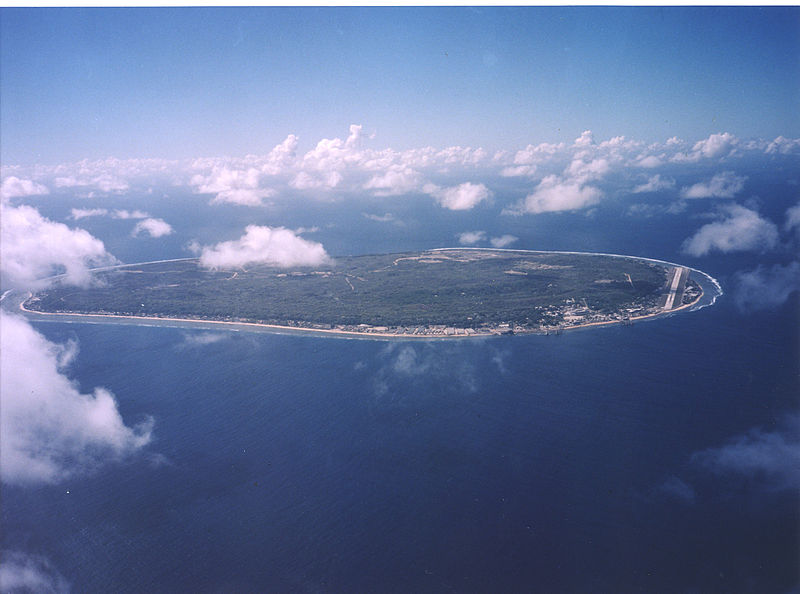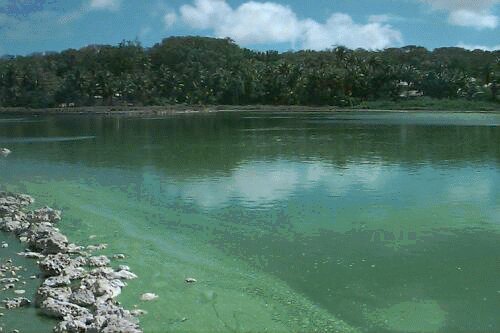The tiny nation of Nauru may have a small population – and fewer resources – but the country has become a pivotal force in battling the destruction small islands face from climate change.
Calling Micronesia’s Nauru a “small country” doesn’t quite begin to describe it. The world’s smallest independent island republic, and, after the Vatican, the second-least populated country, Nauru’s 21 square kilometres can be circled in a pleasant hour’s drive. And it’s certainly remote: the nearest neighbour is an island outpost of Kiribati, more than 300 kilometres to the east. It’s hard to imagine that such a tiny, isolated isle could have much of an impact – or have experienced so much turmoil.
The path to Nauru’s present has been dominated by one thing: phosphate. Small islands in the South Pacific were, many thousands of years ago, home to large colonies of seabirds, and the bones and teeth they left behind built up a heavy layer of phosphate rock, commonly used in fertilizers and other industrial applications.
First colonized by Germany, which relinquished the island to the British after WWI, mining dominated the island throughout the 20th century. Including the UK and New Zealand, the Australian-led British Phosphate Commission, as with Christmas Island, used this trusteeship to strip away layer after layer of the island’s rock, shipping it across the globe for processing. The island’s population swelled with imported workers, and bright things seemed to lie ahead for Nauru.
Mining continued to flourish after Nauran independence in 1968, briefly giving the island the distinction of having one of the highest per-capita incomes and standards of living in the world during the 1970’s. Islanders drove luxury cars and build extravagant mansions. This was not to last, however; in the 1980’s, the island’s reserves were completely exhausted, leaving behind a devastated countryside and a population with little employment, and doomed prospects for the future.
A once-wealthy country was left in ruins, and in 1989 Nauru sued Australia over their short-sighted administration of the island’s resources. The case was settled out of court, and Australia pledged to help restore the destroyed environment around the strip mines. Aid case also been provided to Nauru by countries like China and Taiwan, often in exchange for political support.
Still, the once-green island has been left with a Venusian landscape of raw, exposed rock; in an attempt to rehabilitate its economy, the government has variously tried to reinvent the country as a tax shelter, a detention centre for Australian asylum seekers, and an adventure tourism destination, all with mixed success. The unemployment rate touches 90%, and the health of the islanders is poor, with skyrocketing rates of obesity – which impacts up to 97% of islanders, the highest rate in the world – and associated illnesses like diabetes and heart disease.
After such a tumultuous rise and fall, Nauru is particularly sensitive to the ways in which the environment can impact nations. Despite its small size and mere 9,000-odd inhabitants, the island was chosen as the chair of the Small Alliance of States, composed of 43 island countries banding together to have a long-desired voice. Climate change is the focus of this UN-sponsored panel, and little wonder: like most small South Pacific islands, Nauru lies perilously close to sea level. Droughts and erosion have also increased in recent years, according to the country’s UN ambassador Maureen Moses.
In an April 2011 article she wrote for the Guardian UK newspaper, she emphasized that vulnerable island states like her home are not to be ignored by powerful countries, and that, much like a canary in a coal mine, major coastal cities will also feel whatever is suffered by remote islands. “These decisions will determine whether the future sees a destructive scramble for the world’s remaining resources or an equitable sharing of steadily increasing prosperity,” she wrote poignantly. “Because in the end, we all live on the same island, and how we treat it and each other will settle the fate of humanity.”
The UN Ambassador of Nauru’s article: link
See a video of a reporter’s trip to Nauru here: link





